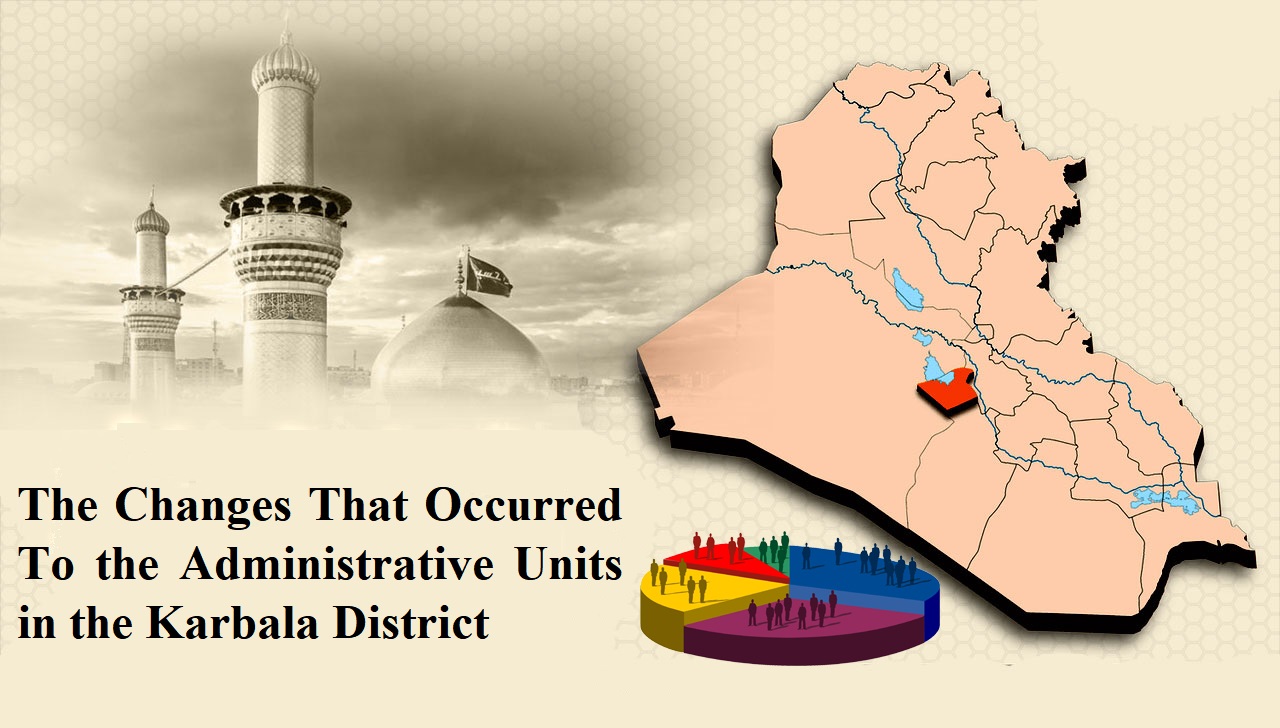In 1895 AD, the Al-Hindiya district witnessed the creation of ten provinces or towns called (Qoul Maasheri), which are administered like sub-districts, and they were administratively linked to Al-Kifl sub-district. They were Hor Al-Dukhun, Abu Nafash, Harqa, Mesaideh, Al-Fattah, Kaabouri, Abu Rawiya, Manfhan, Eastern Mishurab, and Western Mishurab.
Hor al-Dukhn sub-district was created after raising its administrative degree into a sub-district in 1900, as its administrative link was disconnected from al-Hindiya district, and attached to the al-Najaf district.
The transferring of Al-Rughaila town's link from the Al-Najaf district to the Al-Shamiya district, which is administratively linked to the Diwaniyah district because of its geographical proximity and the overlap of its agricultural lands and clans in Al-Shamiya sub-district.
The disengagement of the Rahaliya sub-district from the Karbala district to al-Dulaim district of the Baghdad district, and that was in 1895 AD.
In 1912 AD, the Ottoman government decided to cancel some administrative units in its various provinces, and among them was Hor al-Dukhn district within the Najaf district.
As for the villages associated with the Karbala district, there are many, and perhaps the most prominent of them in 1912 were the villages of Al-Majar, Fleifel, Umm Al-Raji, Al-Ajda, Al-Muneeder, Umm Hilal, Al-Khamaniyyah, Aeelat Al-Baras, Chentounia, Al-Harqa, Al-Qudhban, Abu Rawiya, Al-Rajiba, Al-Zabadiya, Abu Abed Owainat. , Al-Kaabouri, Al-Hunaydiyah, Al-Zubailiya, Al-Sulaymaniyah, Al-Bazool, Al-Badiwaniyah, Al-Sharifia, Al-Hindi, Al-Blaybel, Sharia Al-Lib, Al-Rashidiya, Al-Dhahna, and Al-Qurtah Al-Khadhra.
As for the most prominent villages in the holy Najaf district, they are Qasr Beik Ahami, Umm Sawari, and Anab.
Source:
Mawsueat Karbala Al-Hadharia "Karbala Civilizational Encyclopedia".
A publication of Karbala Center for Studies and Research
The Historical Ax, Department of Modern and Contemporary History, Ottoman Documents
[Vol. 8, Pg. 36-38].

